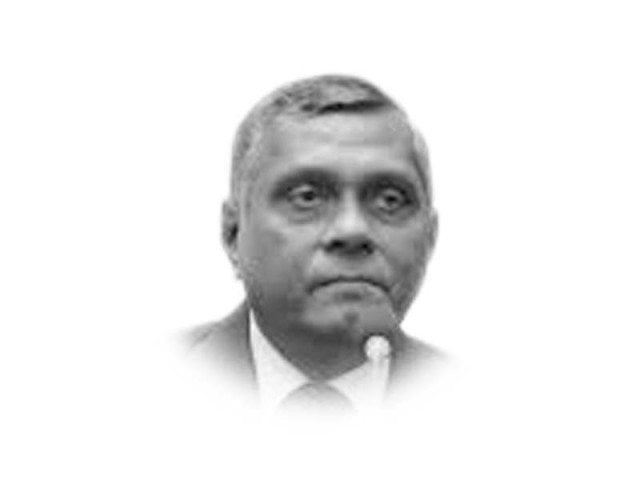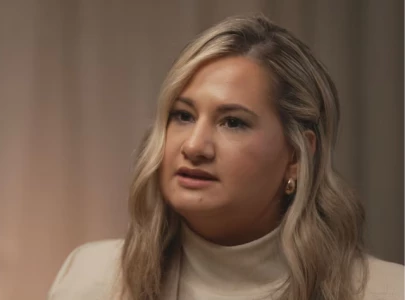
The declaration issued after the Nato summit held in the Lithuanian capital Vilnius says, “Ukraine’s future is in NATO.
We will be in a position to extend an invitation to Ukraine to join the alliance when allies agree and conditions are met.
We reaffirm our unwavering solidarity with the government and people of Ukraine in the heroic defense of their nation, their land, and our shared values.” The much-awaited Nato summit of July 11-12, 2023 ended with pledges made to Ukrainian President Volodymyr Zelensky on sustaining military support to combat the Russian attacks.
The summit was also attended by Finland, a former neutral state of Europe and now a new Nato member; whereas Turkey’s veto on Sweden, another former neutral country’s membership case in the Atlantic alliance, was dropped paving the way for its joining the Atlantic alliance.
Giving stern warning to Moscow, Nato declaration asserted: “The Russian federation is the most significant and direct threat to Allies’ security and to peace and stability in the Euro Atlantic Alliance.” From 12 members on April 4, 1949 when North Atlantic Treaty Organization (Nato) was formed to 31 partners in July 2023, the alliance is witnessing its unabated expansion.
Warsaw Treaty Organization (WTO), which was established on May 14, 1955 and composed of 7 Communist countries under the leadership of the USSR, disintegrated in 1990 following the collapse of Berlin Wall.
Nato was formed to combat the Soviet-led communist threat in Europe but the alliance not only remained intact after the end of Cold War in 1990 but also expanded by including former members of the defunct Warsaw Pact.
Now, Nato is focusing on dealing with what it calls “Russian threat” particularly against Ukraine and elsewhere.
Why is the expansion of Nato after the end of the Cold War perceived as a major threat by Moscow and why is the Atlantic alliance justified to incorporate former members of WTO and neighbours of Russia? Is Nato under the US-British tutelage bent on provoking Russia and plunging Moscow deeper and deeper in the quagmire of Ukraine? How will Nato’s provoking of Russia trigger another global war? These are the questions raised by those concerned about Nato’s policy to encircle Russia and to render military support to Ukraine so as to bleed Moscow.
Realistically speaking, after the Cold War ended, there was no justification to preserve Nato and it should have been disbanded like the Warsaw Pact.
But the American-British strategy to keep the Atlantic alliance intact reflected their age-old policy to contain Russia which emerged as a successor state of the USSR.
Till the time the new Russian state under President Boris Yeltsin was weak and unable to resist the ambitions of Nato, the West was able to encircle Moscow by adding new members.
But, with the consolidation of Russia under President Vladimir Putin, Moscow drew a red line for Nato that a further expansion of the Atlantic alliance at its expense will not be tolerated.
Ukraine was the red line for Moscow that it should not be allowed to join Nato.
When former WTO members like Poland, Hungary and Czech Republic joined Nato along with former Soviet Republics Lithuania, Latvia and Estonia, Russia under Vladimir Putin was furious but was unable to prevent growing encirclement of Russia.
The membership application of neutral states of Europe, Finland and Sweden, further augmented Russia’s insecurity.
When Ukraine made up its mind to join Nato, Russia retaliated by attacking Kiev on January 24, 2022.
Logically, Russian concerns about its neighbours joining Nato made sense and it termed unfair West’s policy of denying Russia space in Europe.
Since the 19th century, the West has been pursuing a policy of Russian containment.
The Crimea war of 1854 and the Russo-Japanese war of 1904-5 also had Western strategy to contain Russia in the Pacific, Baltic and Black Sea.
During the Soviet days, the West continued to pursue the policy of containment of the Soviet Union by forming an alliance system: Nato in Europe; and CENTO and SEATO in West, South and South East Asia.
After the collapse of the Soviet Union, the West instead of disbanding Nato embarked on a policy of its expansion to the borders of Russia.
In this scenario, Russia’s grudge against the US and the West is understandable.
Nato’s anti-Russian policy was reflected in the Vilnius summit when Japan, South Korea, Australia and New Zealand also participated in the event as a show of support.
Provoking Russia and supporting its neighbours, particularly Ukraine, to continue their anti-Moscow tirade is however counterproductive.
America’s dual containment policy of targeting Russia and China is compelling Beijing and Moscow to retaliate.
For instance, Chinese President Xi Jinping recently met Russia’s Speaker of parliament’s upper house Valentina Marviyenko in Beijing in which both sides agreed to lead the correct direction of global governance reform.
The Chinese President in that meeting remarked, “Development of relations was a strategic choice made by both countries based on the fundamental interests of their respective countries and peoples.” Marviyenko said, “Strategic partnership between Beijing and Moscow has reached the highest level in history and continues to develop steadily.” The surge of Nato needs to be analysed from three angles.
First, Nato reflecting the Euro-Atlantic and East European countries not geographically part of Atlantic, feels comfortable with the West despite their internal contradictions.
Except for the US, the UK and Germany, Nato member nations were supportive of Kiev joining Nato.
In order to placate the opposition of the Ukrainian president on not admitting his country into Nato, it was decided to establish a Nato-Ukraine decision-making body for coordinating military and security related matters.
So far, Nato has provided $40 billion worth of weapons to Ukraine after the Russian invasion.
In Vilnius summit, Germany, France, the US and Czech Republic announced providing Ukraine more sophisticated weapons to combat Russian attacks.
Second, the US, the UK and Germany are reluctant on Ukraine’s admission into Nato because of a possible armed conflict with Russia.
All the three powerful members of Nato don’t want to engage militarily with Russia in case Ukraine joins the Atlantic alliance.
It means, Nato’s strategy is to bleed Russia in Ukraine while avoiding direct confrontation.
Third, the surge of the Atlantic alliance is now a reality and neither China nor Russia, along with other likeminded countries, will be able to prevent Nato’s policy of containment.
In this scenario, one can expect further escalation of conflict between Nato and Russia in the days to come.



1730965998-0/BeFunky-collage-(27)1730965998-0-165x106.webp)
1731933289-0/BeFunky-collage-(68)1731933289-0-165x106.webp)








COMMENTS
Comments are moderated and generally will be posted if they are on-topic and not abusive.
For more information, please see our Comments FAQ